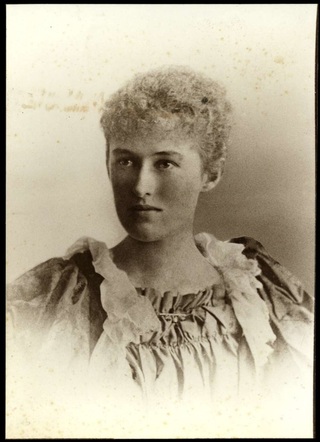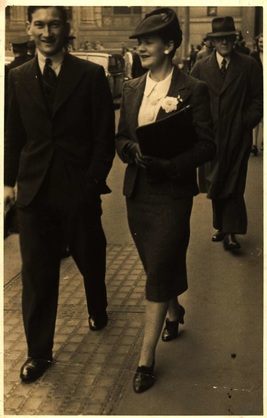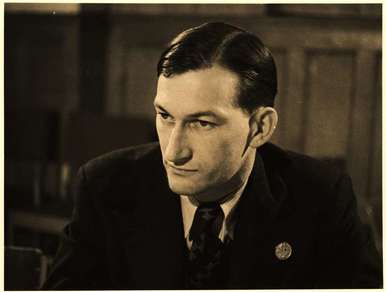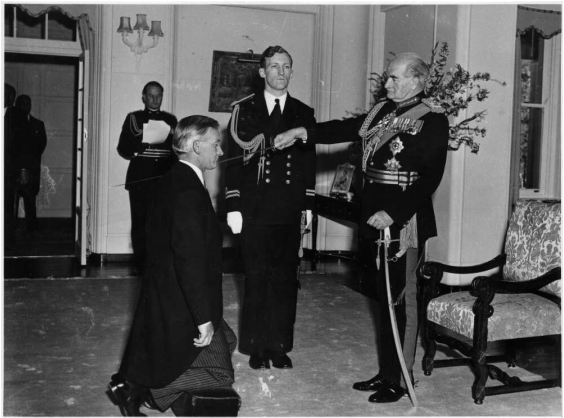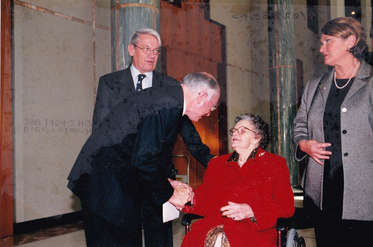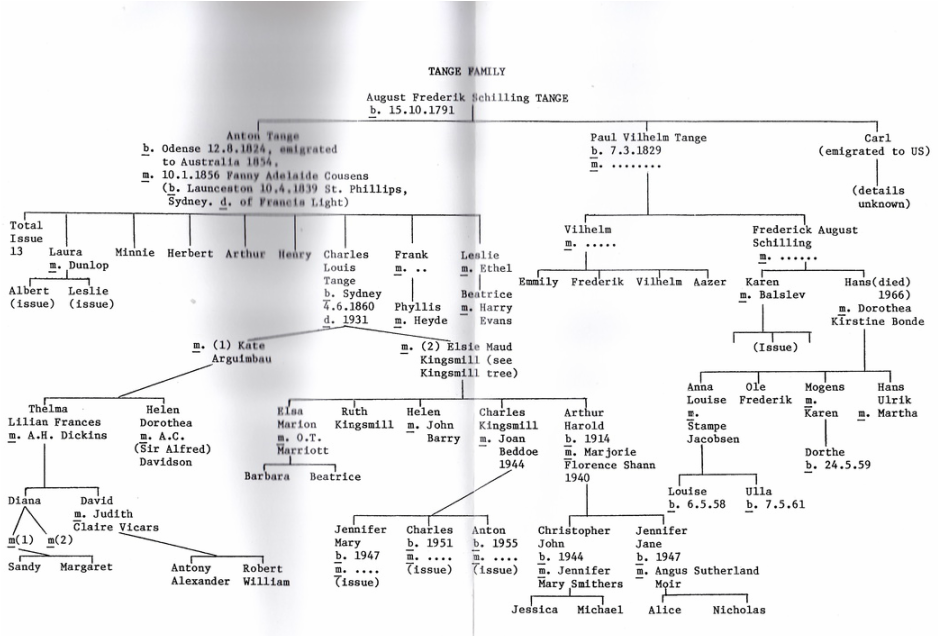The tange family
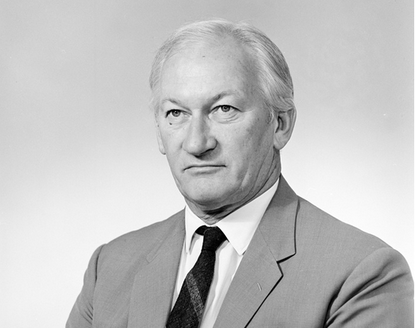
Sir Arthur Tange (1914-2001), whose grandfather was born in Denmark, is largely attributed with shaping Australia’s defence and foreign affairs public service departments.
He was considered to be the last of the great mandarins of the Australian public service and during his long-standing and distinguished career he was at the forefront of the decolonisation of Papua New Guinea and development of Australia’s policy towards Asia.
He was considered to be the last of the great mandarins of the Australian public service and during his long-standing and distinguished career he was at the forefront of the decolonisation of Papua New Guinea and development of Australia’s policy towards Asia.
anton tange (1824-1888)
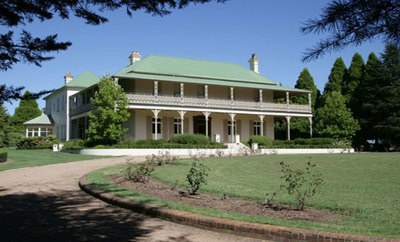 "Bunya Hill" today
"Bunya Hill" today
Arthur's grandfather, Anton Tange, was born in 1824 in Odense, Denmark as the fourth-eldest (out of 8 children) of August Frederic Schilling Tange (1791-1852) and Casperine Hansdatter (1793-1857). He emigrated from Denmark to Australia in 1854 and founded a tea-importing firm that same year operating out of Pitt Street in Sydney. The tea company later became Anton Tange and Sons from which Anton would make his fortune.
Within a year, Anton married a 17-year old girl, Fanny Adelaide (nee Cousens, from Launceston, Tasmania) and they had 13 children, including Frank Tange (born 1876) who later became an honorary surgeon at the Royal North Shore Hospital. Another son, Harold Leslie Tange (1872-1956), worked as a bank manager at Commercial Banking Company of Sydney. Charles Louis (1860-1931), the couple's oldest surviving son, was a legal practitioner and the father of Sir Arthur Tange (see below).
Anton adopted the Church of England in Sydney and it is believed that he was also a Churchwarden. Anton was also a member of the exclusive Sydney club, the Union Club.
In 1878, he built his house, ‘Bunya Hill’, a grand Georgian colonial estate set on 112 acres in Sutton Forest, Southern Highlands, NSW, which is now owned by the actress Nicole Kidman.
Within a year, Anton married a 17-year old girl, Fanny Adelaide (nee Cousens, from Launceston, Tasmania) and they had 13 children, including Frank Tange (born 1876) who later became an honorary surgeon at the Royal North Shore Hospital. Another son, Harold Leslie Tange (1872-1956), worked as a bank manager at Commercial Banking Company of Sydney. Charles Louis (1860-1931), the couple's oldest surviving son, was a legal practitioner and the father of Sir Arthur Tange (see below).
Anton adopted the Church of England in Sydney and it is believed that he was also a Churchwarden. Anton was also a member of the exclusive Sydney club, the Union Club.
In 1878, he built his house, ‘Bunya Hill’, a grand Georgian colonial estate set on 112 acres in Sutton Forest, Southern Highlands, NSW, which is now owned by the actress Nicole Kidman.
Connections to Denmark
Anton made a tour of Europe in 1883 and the family also visited Denmark, including his brother Paul and his family. Evidently, Anton's arrival from the other side of the world with many children and luggage left a deep impression with this side of the family.
Between 1865 and 1888 Anton was the Danish Consul General in Sydney. In 1883, during a visit to Denmark, he was appointed (by the King of Denmark) a Knight of the Order of Dannebrog of the Third Class.
Although prosperous for many years, Tange's tea importation company started facing increasing competition when a rival company, Bushell's, began selling tea in pound packets. The Tange's, who saw themselves as merchants not grocers, stuck with the larger tea chests. The company would eventually succumb in the 1920s (under the control of a partnership including Anton's son, Herbert).
Anton died in Ashfield, New South Wales on 18 August, 1888 aged 64.
Between 1865 and 1888 Anton was the Danish Consul General in Sydney. In 1883, during a visit to Denmark, he was appointed (by the King of Denmark) a Knight of the Order of Dannebrog of the Third Class.
Although prosperous for many years, Tange's tea importation company started facing increasing competition when a rival company, Bushell's, began selling tea in pound packets. The Tange's, who saw themselves as merchants not grocers, stuck with the larger tea chests. The company would eventually succumb in the 1920s (under the control of a partnership including Anton's son, Herbert).
Anton died in Ashfield, New South Wales on 18 August, 1888 aged 64.
Charles Louis Tange (1860-1931)
|
Anton's second-eldest son, Charles Louis Tange, was born in Sydney in 1860. He went to The King's School in Parramatta and later St. Paul's College and University (where he took a liberal arts course) and began practicing law in 1883. In his younger years, Charles played rugby and captained not only the state rugby team but also the Australian side in its first international match against England.
Charles was married twice - in 1897 he married Kate Frances (nee Arguimbau) in 1889, with whom he had two daughters, Hilda Dorothy and Thelma Lilian Frances. Sadly, in September 1895, Kate died at the age of 32 from pneumonia leaving Charles with a two- and a three-year old. Charles' sister, Minnie, moved in with the family and helped take care of the two girls. In 1896 Charles married Elsie Maud (nee Kingsmill, known as Maud), the daughter of a reverend. They had five children, Elsa Marian Eveline (known as Mollie), Jack, Arthur, Ruth and Nellie. |
Hard times
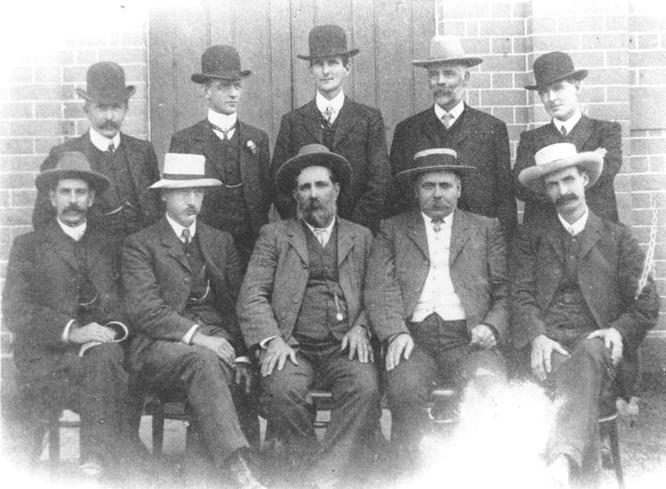 The Erina Shire Council, Charles Louis Tange is seated bottom row, second from the left
The Erina Shire Council, Charles Louis Tange is seated bottom row, second from the left
In the first years of the century Charles moved his family to the remote Mangrove Mountain in Gosford where he had built his house "Koree" on land cleared earlier from virgin bush. The total acreage of Charles' properties including uncleared bush taken up later was in excess of 200 acres.
Charles was also involved in the local community and in 1906, he was elected a member of the first Council of the new Erina Shire.
Although he carried on with his law practice in Sydney, money were tight as he failed to obtain an adequate return from the Koree investment. In 1914, the family moved closer to Gosford, to a rented cottage owned by Charles' son-in-law.
In December 1931, Charles passed away leaving nothing in his estate and his widow Maud effectively poverty stricken.
Charles was also involved in the local community and in 1906, he was elected a member of the first Council of the new Erina Shire.
Although he carried on with his law practice in Sydney, money were tight as he failed to obtain an adequate return from the Koree investment. In 1914, the family moved closer to Gosford, to a rented cottage owned by Charles' son-in-law.
In December 1931, Charles passed away leaving nothing in his estate and his widow Maud effectively poverty stricken.
arthur harold Tange (1914-2001)
|
Arthur Harold Tange was born on 18 August 1914. After losing the family inheritance, the family could no longer afford private education, and Arthur, being the youngest, went to Woy Woy Primary School and later Gosford High School where he finished at the age of 16.
As the depression hit, Arthur was fortunate to get a job at the Bank of New South Wales, which was managed by his half-sister’s husband, Sir Alfred Davidson. With his brother-in-law’s help, Arthur was able to go to university, and attended Australia’s only free university, the University of Western Australia. Arthur excelled at university, playing rugby for Western Australia and graduating with a first class honours in economics. In 1940, he married Marjorie Shann, who was the daughter of Professor Edward Shann, the university’s professor of economics and history. They had two children, Christopher John (born 1944) and Jennifer Jane (born 1947). |
international career
|
After finishing university, Arthur continued working for the Bank of New South Wales, first in its think tank in Sydney and later in Fiji. In 1942, Arthur was called for military service, and joined the Department of Labour and National Service as a temporary research officer. Towards the end of the war, Arthur started working for the Department of External Affairs, and it was in this capacity that he was posted to the Australian mission to the United Nations in New York specialising in economic affairs. He was also part of the Australian delegation to the international conference at Bretton Woods where the International Monetary Fund and the World Bank were established.
In 1953, Arthur was sent to Washington to the Australian embassy with the official title as Minister before joining the Minister for External Affairs, Lord Casey, as Secretary the following year, aged just 39. During his 11 years in |
this position, the Department improved tremendously in representing Australia abroad, particularly in Asia, advising the Government and handling international crises, such as in Suez, Indonesia, Malaysia, the Soviet Union, and Vietnam.
arthur's achievements
|
Arthur was made an Officer of the Order of the British Empire (OBE) in 1953, a Commander of the same order (CBE) in 1955 and in 1959, aged 45, he was knighted and from then on known as Sir Arthur. In 1977, he was made a Companion of the Order of Australia (AC).
In 1965, Arthur was appointed High Commissioner to India, a post he held for five years. At the end of 1969, Arthur was offered three positions, Ambassador in Washington, Secretary of External Affairs and Secretary of the Defence Department. Arthur chose the latter and served in this role from 1970 up until his retirement nine years later. During this time, Arthur launched a major reorganisation merging the Navy, Army, Air and Supply departments into the Department of Defence. |
Arthur is the only person to have ever headed up both the Department of External Affairs (1954-65), now Foreign Affairs and Trade, and Defence (1970-79). He is credited with transforming the departments into a respected and competent foreign office and diplomatic service, with expertise on South East Asia, as well as improving the Defence department’s analytical and strategic capacities. These socalled “Tange reforms” had an enormous impact on Australia’s external policies and helped shape Australia’s defence policy.
the last of the great mandarins
|
Arthur died at the age of 86 on May 10, 2001 and survived by his wife, Lady Marjorie, two children and four grandchildren.
A state memorial service was held in Canberra in Parliament House on May 24, 2001. Former Prime Minister Malcolm Fraser described Arthur as by far the best public servant he had ever worked with. At the memorial service, the Hon Alexander Downer, Minister for Foreign Affairs, said |
The words that we often hear used to describe Sir Arthur Tange – frank, fearless, strong, tough, efficient, fair, humane, ambitious for Australia – help us to capture the measure of the man and his legacy. He will be remembered as embodying the finest traditions of Australia’s Public Service, and for his immense contributions to our nation. Today we gather to acknowledge his achievements, and the debt every Australian owes him.
